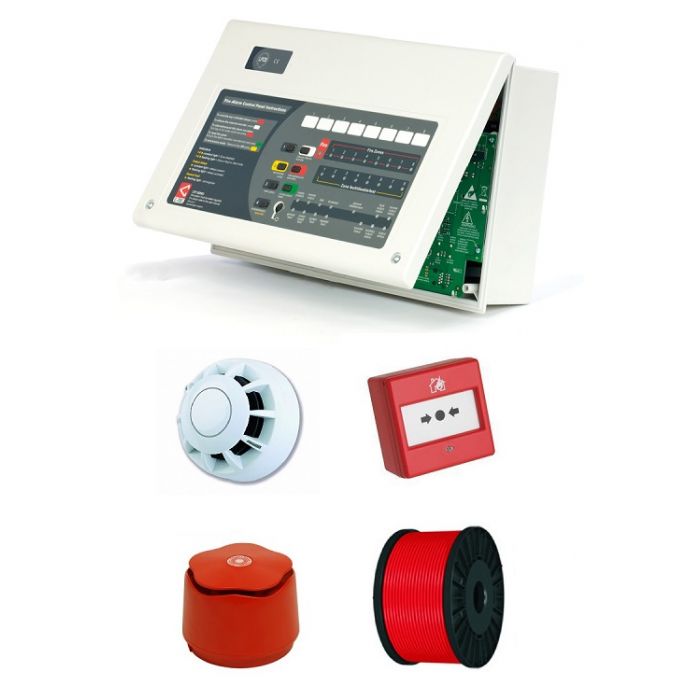What Is A Conventional Fire Alarm System?
What is a conventional fire alarm system?

Conventional Fire Alarm Systems Explained
Conventional Fire Alarm Systems or non-addressable type systems are the simplest type of fire alarm systems suitable for use in commercial and industrial buildings. They are typically available in 2, 4 and 8 zone sizes, although some manufacturers produce panels in larger sizes. The zones are terminals within the control panel housing where the circuits connected to the fire alarm systems detectors and manual call points are connected to. The cables for these circuits are normally wired in fireproof cable, in order to meet the requirements of the British Standard for fire alarm installations, which is BS5839.
The control panel is designed to monitor the zone circuits for fire and fault conditions. When a fire or fault condition is detected, the control panel gives the user information on which zone the fire or fault has occured. This is typically indicated using LEDs next to the zone labels, to show which zone the activation has occured within.
A conventional fire alarm system panel has seperate sounder circuits to the detector zone circuits. The sounder circuits are where any electronic sounders, bells, flashing beacons and relays would be installed onto the system. This means that seperate fireproof cable circuits need to be installed for the sounders and beacons on a conventional fire alarm system. The sounder circuits are also monitored by the panel for fault conditions.
The control panels functions are normally accessed using either a key, or code entry, which then allows the user to control the system with the function buttons on the panel. The key and / or code entry feature means that the system cannot be used by unauthorised persons.
The control panel will also have space to enclose standby batteries within the housing. These batteries are continually being kept charged up by the control panel in normal day to day operation. The purpose of these batteries is to ensure that the fire alarm system still remains operational, even in the event of a mains failure, within the building.
What Type Of Detectors Can Be Used On A Conventional Fire Alarm System?
There are several types of detectors available for conventional fire alarm control panels. These are as follows:-
- Conventional Optical Smoke Detectors
- Conventional Ionisation Smoke Detectors
- Conventional Rate of Rise Heat Detectors
- Conventional Fixed Temperature Heat Detectors
- Conventional Multisensor Detectors
- Conventional Carbon Monoxide Detectors
- Conventional Flame Detectors
The type of detector used should be matched to the type of room in which it is to be installed, whilst also looking to minimise any false alarms within the room. For example in a normal office, you would normally expect an optical smoke detector to be used. This provides the best practice for automatic detection in an office area, and will not normally give false alarms in an office environment. Whereas in a kitchen, normally a heat detector would be used, instead of a smoke detector, as smoke detectors would be prone to false alarm in an environment with cooking fumes.
What Type Of Sounders Should Be Used On A Conventional Fire Alarm System?
Typically most fire alarm system sounder circuits have an operating voltage of 24V DC. This means that the sounders, bells, beacons and relays used should have an operating voltage of 24V DC. Typically red coloured units are used for fire alarm system alarm devices, although white coloured units could be used in aesthitically sensitive areas.
If you're interested in these systems you may also be interested in our conventional fire alarm system builder package or conventional fire alarm panels.






